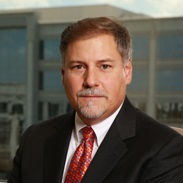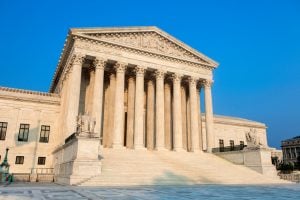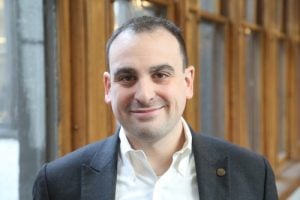Mark Yacano has had a really interesting journey in law and has been able to navigate multiple transformations with grace. He started as a commercial and product liability lawyer and then morphed into eDiscovery. After a stint in New York leading an eDiscovery services company, he leveraged his passion for law and technology at Major, Lindsey & Africa to help build a business unit that focuses on, contract management programs, content automation and alternative staffing models. Mark explains, “ Legal Department clients often come to us they have a ‘burning platform,’ and a deep business needs to find ways to improve their process and interactions with technology.”
Mark also hosts Erasing the Stigma: Conversations About Mental Health in the Legal Profession a podcast at Major, Lindsey & Africa. You can find it on the Legal Talent Talk Network wherever you get your podcasts. “As someone who personally has faced mental health issues, I jumped at the chance to join my MLA colleagues in contributing to the dialogue,” Mark explains. He continues, “I am engaging with passionate and generous people every day. The podcast is a true labor of love. It gives me an opportunity to give back to the profession I love.”
Mark explains, “Although a lot of focus is on the issues that lawyers in firms face, the problem goes beyond law firms.” Mark says, “In-house attorneys often have as much work (and stress) as their law firm counterparts but with fewer resources. We see a lot of lean legal departments these days with gifted lawyers working under constant stress.” According to Mark, the personality characteristics of lawyers that make it hard for them to seek help are the same, whether you are at a firm or in-house.
There are a lot of things we can do to cope with stress and practice self-care. Mark cautions, “Please understand they should all augment getting proper health care including regular physicals, along with therapy and psychiatric care, where appropriate.” And yes, Mark has some tips!
Start with Basics, Eat Right
Mark says, “For me, eating right means avoiding binges at multiple food carts when I am stressed. Attempting to digest hot dogs, pretzels, and gyros within ten minutes of each other is a short-term high. You feel much worse afterward.” So definitely do not try this at home!
Be Consistently Inconsistent to Mix Things Up
Mark is often on the road. After all, he is in a client service business. “When I travel, I try to mix things up because I think it makes the grind of being on the road less stressful.” Mark uses the Mind-body app to find new places to work out. He says, “I have found that failing at yoga in a place where you know no one is liberating. Going to different restaurants and trying new dishes is a great way to avoid the rut of (over) eating the same thing.”
Order (Nice!) Stationery and a (Fancy!) Pen
People like notes and they remember them. Marks advises, “Getting a handwritten note is a nice surprise these days. They are memorable because they are rare. They also humanize the author and make a relationship.” That is why he insists that traveling with notes, stamps and a nice pen is a must!
Stop Talking to Yourself!
“An enormous amount of our stress comes from the inner dialogue we have with ourselves,” according to Mark. He continues, “Unfortunately, the inner dialogue usually isn’t a pep talk but an often-incorrect narrative about who we are. We often talk to ourselves more harshly and less respectfully than we talk to others.” Mark recommends, “I travel with a copy of Gary John Bishop’s book called UNFU*K Yourself: Getting out of your head and into your life. I consider it the ultimate pocket guide to stopping the negative self-talk.”
Watch Hallmark Movies, Often 🙂
Mark recommends watching the classic, hallmark movies. “You can watch them all year round, and they always have the perfect ending! Who hates a movie where everyone is happy?” Mark explains. After all, there is a reason why these movies resonate across generations.
Learn to Cook to Build Great Relationships
Mark says, “Cooking not only helps you sustain life, is a way to learn, create, and to bring people together.” He explains, “Having grandparents who were in the restaurant business, I grew up with a great view of how food can bring people together. My mom still has people in for dinner weekly. My wife and kids all cook. It is a common bond that ties us together. Great relationships can come from time spent at the dinner table.”
 Olga V. Mack is the CEO of Parley Pro, a next-generation contract management company that has pioneered online negotiation technology. Olga embraces legal innovation and had dedicated her career to improving and shaping the future of law. She is convinced that the legal profession will emerge even stronger, more resilient, and more inclusive than before by embracing technology. Olga is also an award-winning general counsel, operations professional, startup advisor, public speaker, adjunct professor, and entrepreneur. Olga founded the Women Serve on Boards movement that advocates for women to participate on corporate boards of Fortune 500 companies. Olga also co-founded SunLaw, an organization dedicated to preparing women in-house attorneys to become general counsels and legal leaders, and WISE to help female law firm partners become rainmakers. She authored Get on Board: Earning Your Ticket to a Corporate Board Seat and Fundamentals of Smart Contract Security. You can email Olga at olga@olgamack.com or follow her on Twitter @olgavmack.
Olga V. Mack is the CEO of Parley Pro, a next-generation contract management company that has pioneered online negotiation technology. Olga embraces legal innovation and had dedicated her career to improving and shaping the future of law. She is convinced that the legal profession will emerge even stronger, more resilient, and more inclusive than before by embracing technology. Olga is also an award-winning general counsel, operations professional, startup advisor, public speaker, adjunct professor, and entrepreneur. Olga founded the Women Serve on Boards movement that advocates for women to participate on corporate boards of Fortune 500 companies. Olga also co-founded SunLaw, an organization dedicated to preparing women in-house attorneys to become general counsels and legal leaders, and WISE to help female law firm partners become rainmakers. She authored Get on Board: Earning Your Ticket to a Corporate Board Seat and Fundamentals of Smart Contract Security. You can email Olga at olga@olgamack.com or follow her on Twitter @olgavmack.






 Kathryn Rubino is a Senior Editor at Above the Law, and host of
Kathryn Rubino is a Senior Editor at Above the Law, and host of 
 Tom Kulik is an Intellectual Property & Information Technology Partner at the Dallas-based law firm of
Tom Kulik is an Intellectual Property & Information Technology Partner at the Dallas-based law firm of 


 Olga V. Mack is the CEO of
Olga V. Mack is the CEO of 





